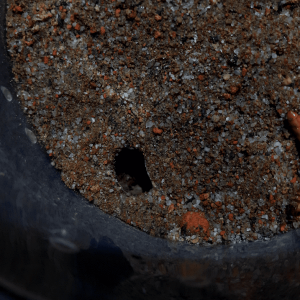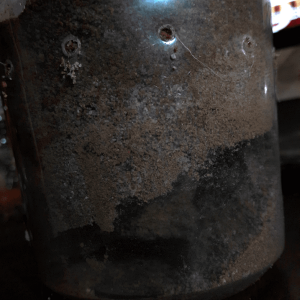-
Are you a Tarantula hobbyist? If so, we invite you to join our community! Once you join you'll be able to post messages, upload pictures of your pets and enclosures and chat with other Tarantula enthusiasts. Sign up today!
You are using an out of date browser. It may not display this or other websites correctly.
You should upgrade or use an alternative browser.
You should upgrade or use an alternative browser.
sand
-

Example of 'stable substrate' part 2 (30 oz delicup)
Some species, like Aphonopelma joshua (burrow pictured) actually require sand-clay substrate to behave naturally and calm down. Think about it. These specimens spent their whole lives on this exact substrate type prior to me collecting them, and definitely hate coco with a passion!- MBullock
- Media item
- clay sand substrate
- Comments: 0
- Album: Misc
-

Example of 'stable sandy substrate' (30 oz delicup)
You get 40 lbs of play sand for a mere $5. I get my clay myself from nature. mix by hand (DO NOT SHAKE) thoroughly, then water carefully. dont overdo the water. wait for it to soak into the sand and the clay with transform into a glue that holds the sand together. a little clay goes far.- MBullock
- Media item
- clay sand sand does not hurt tarantulas unless it's loose substrate
- Comments: 1
- Album: Misc
-

Macrobaenetes algodonensis
algodones sand-treader. a species of specialized camel cricket that lives nowhere else on earth. only active during winter and spring- eggs remain in 'stasis' until the monsoon, in which they resume development, hatching around fall.- MBullock
- Media item
- camel cricket sand treader
- Comments: 0
- Album: Hexapoda
-

Megalorchestia corniculata with brood
Breeding experiment was successful, like isopoda, these hold young in their marsupium, these young are called 'mancae' (singular- manca) and remain close to the mother, of whom cares for them until their next molt.- MBullock
- Media item
- amphipoda crustacea flea sand
- Comments: 0
- Album: Crustacea